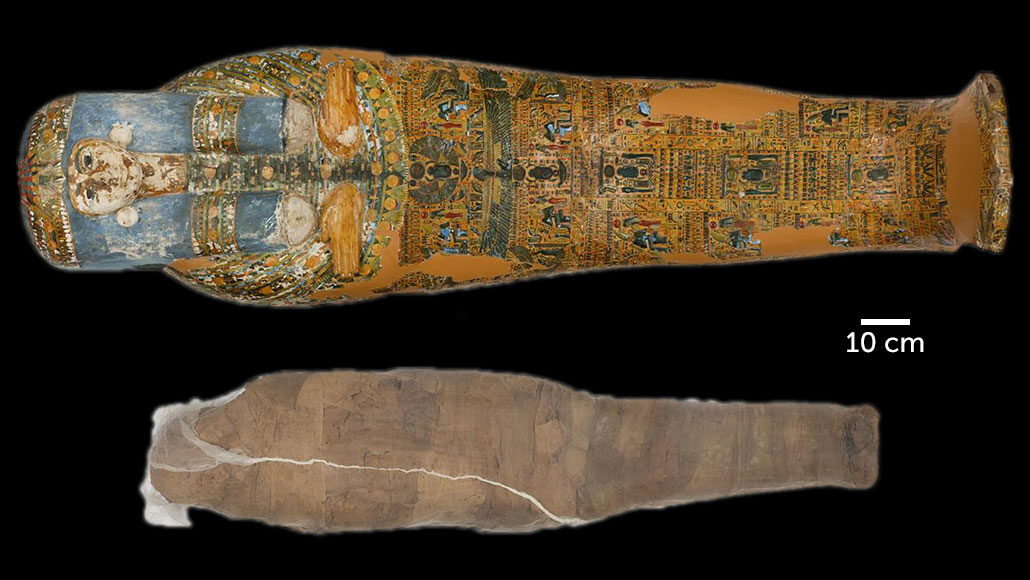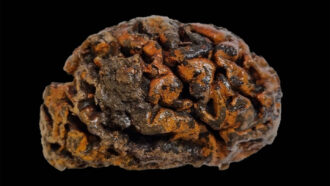CT scan: (Also known as a CAT scan). The term is short for computerized axial tomography. It is a special type of X-ray scanning technology that produces cross-sectional views of the inside of a bone or body.
deceased: An adjective that describes someone who has died.
desecrate: (n. desecration) To damage or disrespectful treat sacred things (including religious items) or human remains.
fracture: (noun) A break. (verb) To break something and induce cracks or a splitting apart of something.
limestone: A natural rock formed by the accumulation of calcium carbonate over time, then compressed under great pressure. Most of the starting calcium carbonate came from the shells of sea animals after they died. However, that chemical also can settle out of water, especially after carbon dioxide is removed (by plants, for instance).
linen: Cloth woven from flax.
mineral: Crystal-forming substances that make up rock, such as quartz, apatite or various carbonates. Most rocks contain several different minerals mish-mashed together. A mineral usually is solid and stable at room temperatures and has a specific formula, or recipe (with atoms occurring in certain proportions) and a specific crystalline structure (meaning that its atoms are organized in regular three-dimensional patterns).
mummy: A body preserved by natural processes or human technology, with some skin and organs remaining.
pigment: A material, like the natural colorings in skin, that alter the light reflected off of an object or transmitted through it. The overall color of a pigment typically depends on which wavelengths of visible light it absorbs and which ones it reflects. For example, a red pigment tends to reflect red wavelengths of light very well and typically absorbs other colors. Pigment also is the term for chemicals that manufacturers use to tint paint.
resin: A sticky, sometimes aromatic substance, often secreted by plants. It may also be the viscous starting ingredient for some plastics that will harden when heated or treated with light.
shell: The normally hard, protective outer covering of something. It could cover a mollusk or crustacean (such as a mussel or crab), a bird’s egg or some other relatively soft tissue that needs protection (such as a tree nut or peanut). (in munitions) An explosive bullet, bomb, grenade or other projectile.
society: An integrated group of people or animals that generally cooperate and support one another for the greater good of them all.








